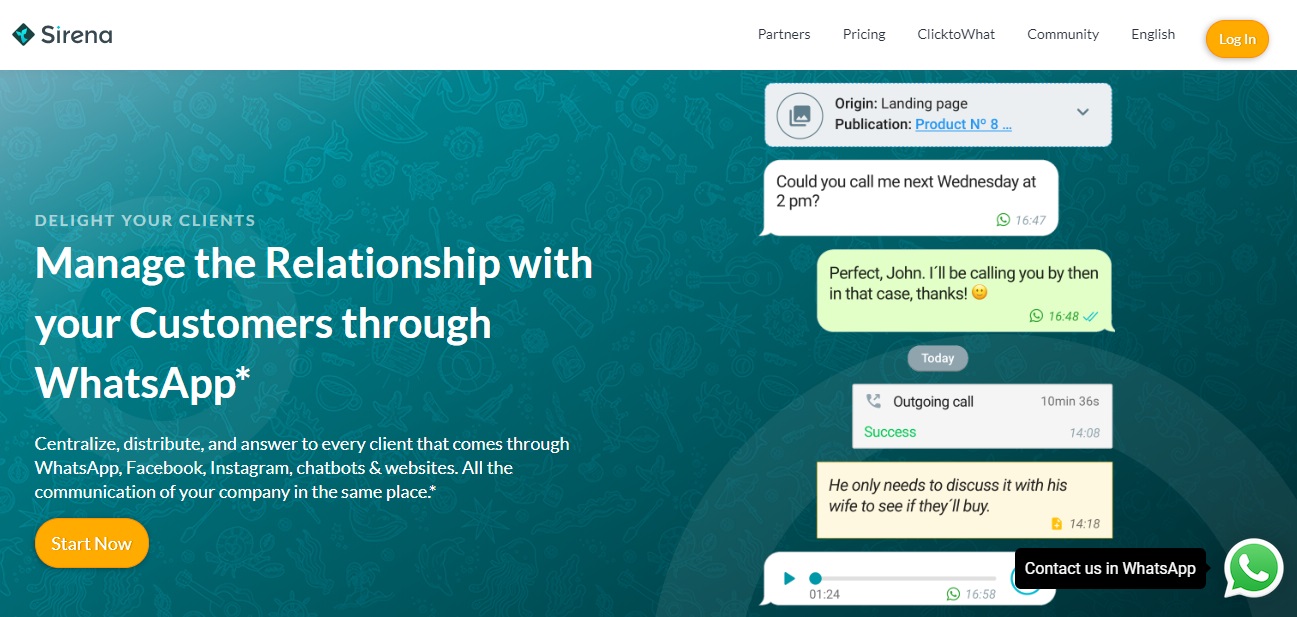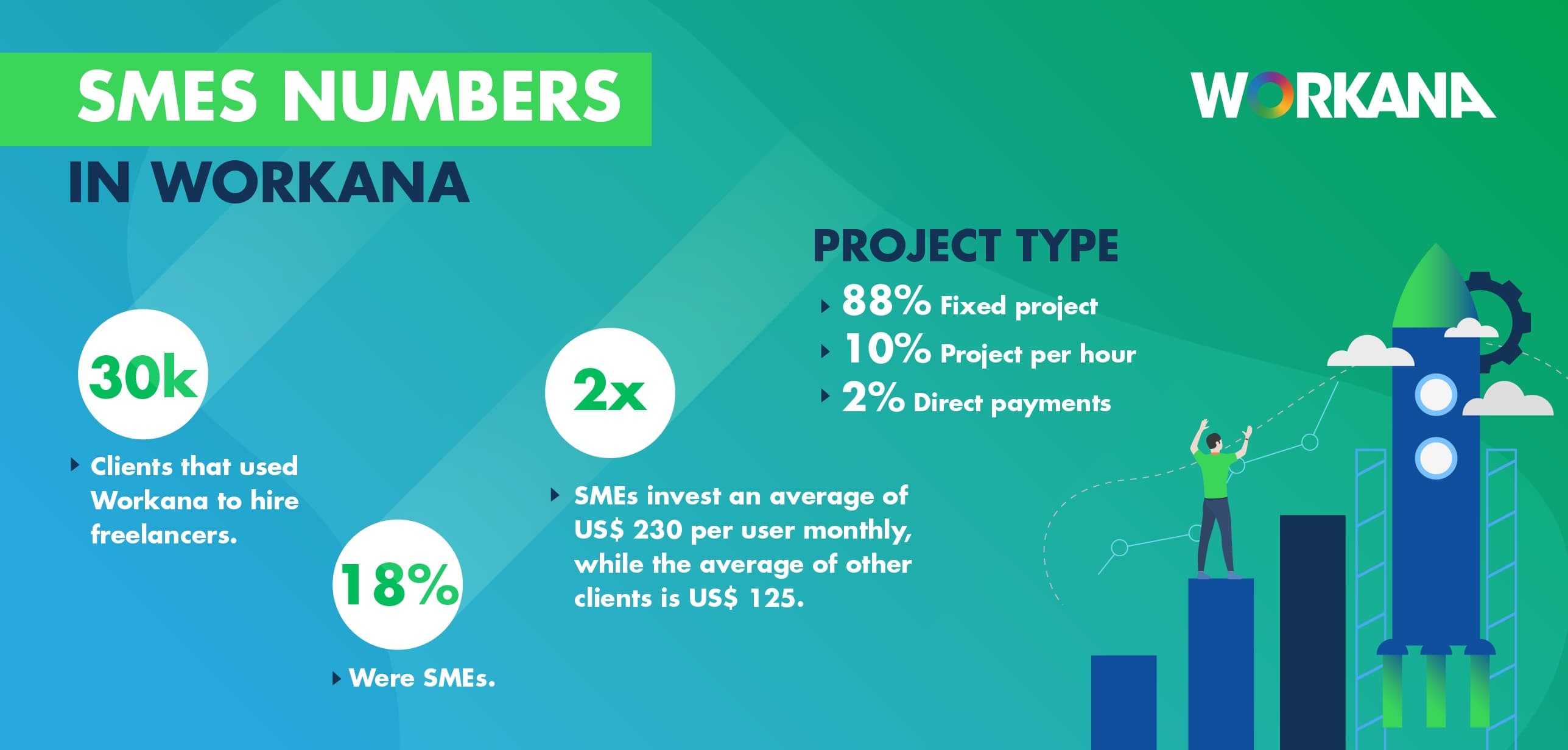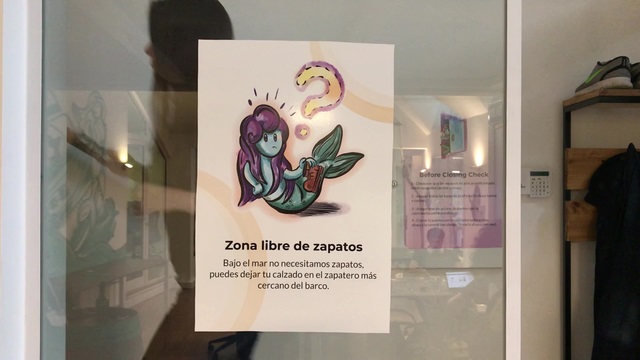At Workana, we work daily with entrepreneurs, small businesses and dreamers who decide to take this step and shape their small business. How do they do that? What challenges do they face? Watch as Sirena, the first WhatsApp CRM, managed to enhance its working model with the help of professional freelancers.
According to ILO (International Labor Organization) studies, the SMEs represent the backbone of most of the world’s economies and their role is crucial for Latin American countries that are mostly in the process of development.
Some numbers? According to data from the International Council for small businesses, they represent 90% of the total number of companies and are responsible for generating employment for 60-70% of the population.

Sirena is one of those cases with a strong and young entrepreneurial drive. It’s a tool that helps businesses to centralize all communications with customers in one place to give it better attention and response. With this APP, a sales team contacts its customers in seconds, makes three times more follow-ups and doubles sales.

It currently employs more than 50 people and has offices in Mexico, Argentina, and Brazil.
Sirena’s story starts like this
It was the year 2016, Miguel Morkin, Julián Bender, Ezequiel Sculli and Lautaro Schiaffino made a website called rodati.com, a car sales support site. A lot of effort, a lot of brains and a huge amount of post-its on the walls seemed to indicate that this would work. But while they were rolling, they also found a problem that they didn’t expect and for which – in the creation of rodati – they had developed a solution.
Even nowadays, the flow of communication between customers and sellers was poor. The attempts at contacts were isolated, temporary and ineffective. The results depended on the platform, the moment and if you happened to cross paths with the same person again. Besides that, the times during which these contacts were handled didn’t stir any sympathy in the users/customers/consumers. The idea was Sirena.

As Julián tells us, through Workana they were able to develop and start a process of telephone prospecting and sales in less than 5 days. They were also able to enhance their content strategy with more than 10 freelancers from different places. That allowed them to have both quality and quantity in a short time and in all languages. At total, there are more than 25 freelancers, among designers, virtual assistants, telemarketers, salespersons, among others, who usually work with them.
Lessons learned from this process
Over time, they learned much about themselves and about the best ways to work with freelancers. Julián’s first advice is to have a very detailed job description. This way, it’s much easier to reach agreements, give clearer instructions and the freelancer can understand at what times and in what way the work can be carried forward.

What difficulties did they find?
For this new way of doing things to work, they first had to fight some myths. The main fear shared by the office team? The usual: “we won’t see their face” or “we need them to be sitting next to us to solve things easier.” For Julián, this wasn’t a relevant issue. “They weren’t more than just myths” and were solved efficiently when they started focusing on people.
“When you realize that there’s a professional on the other side and this process is mediated by technology, with all the tools to communicate and follow-up on projects, there are no limits other than what your own processes have.”
For the Sirena team, there is no turning back. They will continue working like this. It’s the way it is: flexible, diverse, agile and above all… it has no limits. As a closing statement, Julián advises others that “they also dare to tear down their own myths and begin to try growing this way”.

You may be interested in:
- Remote work teams and accelerated growth: how to build your dream team virtually?
- How to build a team of freelancers who live in different countries than yours?
- The importance of digital transformation in your business strategy
—
At Workana we work daily with entrepreneurs, small businesses and dreamers who decide to take this step and shape their small business. How do they do that? What challenges do they face?
Many of them are seeking to consolidate their online presence, take their first steps into branding, need professional help to develop the core of their business, need collaboration to answer customer queries, and much more.
So far, in 2019, of the 30 thousand customers that used Workana to hire freelancers, 18% were SMEs.

We know that behind each and every one of them there’s an effort to invest wisely to receive an efficient return on that investment. And, even so, we find that their average monthly investment per user is US$ 230. Compared to what other clients invest (US$ 125), this number represents almost double that amount. This shows us that SMEs know very well what they need… and what they need right now!
Keep growing with entrepreneurial drive.
Here we leave you some ideas on how to empower SMEs with a freelancer and also some mistakes that you can avoid.
Want to share your case with us?
Complete this form and we’ll get in touch with you.
What is Workana?
We invite you to know Workana, the largest freelance platform in Latin America. Since 2012, we strive to continue connecting companies and entrepreneurs with remote workers from the most diverse specialties.





